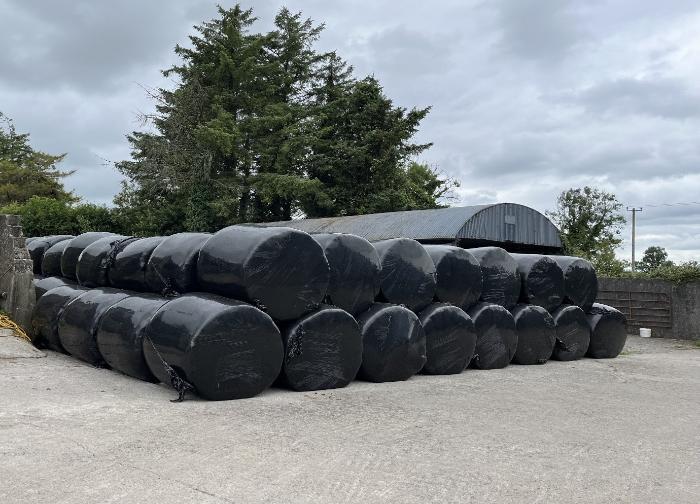Silage, Both a Cost and an Asset, how does yours Stack Up?
Silage, Both a Cost and an Asset, how does yours Stack Up? 29 October 2024 Type Media Article By John Galvin, B&T Drystock Adviser, Teagasc Galway/Clare Region November usually kicks off the winter proper in the west, even though there has been good opportunity for extended grazing over the past few weeks albeit with grass […]
By By John Galvin, B&T Drystock Adviser, Teagasc Galway/Clare Region
Silage, Both a Cost and an Asset, how does yours Stack Up?
Type Media Article
By John Galvin, B&T Drystock Adviser, Teagasc Galway/Clare Region
November usually kicks off the winter proper in the west, even though there has been good opportunity for extended grazing over the past few weeks albeit with grass supplies getting scarce on many farms at this stage. With grass silage the primary source of winter forage, be it in round bale form or pits, 1st cuts, 2nd cuts and surplus grass from fields making up the feed stocks there is scope for huge variation in the quality of this silage. It is highly advisable for all famers feeding silage of some form or other to get it tested. Silage sampling figures amongst Irish farmers are very low and this is really a missed opportunity.
Yes, there are on farm direct assessments that can be carried out to establish Dry Matter, Preservation levels and feed value using our senses of sight, touch and smell but these are only a guide at best. With silage crops accounting for one most farms largest costs it is nonsensical that farmers feed it out to a variety of groups/types of livestock without knowing is it adequate to match the animal’s nutritional requirements.
The most important quality criteria when it comes to analysing silage feed value is the Dry Matter Digestibility (DMD) as grass crude protein and minerals generally parallel it. The DMD value is used to estimate the energy contained in the silage as well as expected live weight gains/milk yields and for planning meal supplementation rates.
| Target Silage Quality | |
| Autumn Calving Cows | 75 DMD |
| Spring Calving Cows | 65-70 DMD |
| Young Breeding Stock | 70 DMD |
| Finishing Animals | 75 DMD |
| Weanlings & Stores | 75 DMD |
Generally Spring Calving Suckler cows are in medium to good condition this year with reasonable supplies of grass throughout the summer grazing period and if they are fed to appetite on 65 DMD silage there should be no issue, however first and second calvers should be penned together if possible and fed 70 DMD silage/65 DMD + 2kg meal.
The beef trade is flying at the moment both live in the marts and for finishers at the factories which is very positive. Beef price aside the principles and advice for best practice do not change when it comes to wintering cattle. It is very clear from the table above, that farmer’s feeding weanlings, stores and finishing animals requires high quality silage. There is the temptation to just feed these cattle to appetite on silage only, without knowing the quality of the silage. The optimum daily gain for a weanling/store is 0.60kg/day, any more comes at too much of an added meal cost unless the animal is suitable for a very high end export market. If the animal is gaining < 0.5kg/day it will lead to a stunting effect due to a protein deficiency and having a poor weight for age will make an animal much less attractive in a mart ring.
| Good Silage V’s Poor Silage | |||
| Diet for 300kg weanling/store(Silage fed ad-lib) | Expected Liveweight Gain | Cost per Animal per Day | Breakeven Price Required(To cover feed only) |
| 70 DMD Silage + 1Kg Conc’s | 0.60kg/day | €1.46/hd/day | €2.43/kg |
| 60 DMD silage + 2.5Kg Conc’s | 0.60kg/day | €1.58/hd/day | €2.63/kg |
| 60 DMD silage + No Conc’s | 0.20kg/day | €1.38/hd/day | €6.90/kg |
As can be seen from the table above, poor quality silage as no role in the diets of young growing cattle and the cost associated by both the added concentrate supplementation and/or the thrive penalty associated with feeding inferior silage are just too high for it to be financially feasible. For finishing cattle there is equally no place for inferior quality silage. A typical continental steer within 100-120kg of finished weight needs to be fed ad-lib 75 DMD silage + 4-5kg of high energy concentrates (€3.10/day) to gain 1kg LWT (.60-.70kg carcass wt) per day whilst to achieve a similar weight gain on 65DMD silage would require double the input of concentrates and at that level ad lib concentrates feeding should be considered.
These are just some of the scenarios that make testing your silage so important in making good informed decisions on the level of meal/concentrate supplementation required for the different classes of stock on farms. Indeed savings can be made especially when feeding dry suckler cows with 70-75 DMD silage, they can be restricted to 80% of intake which equates to almost 2 bales per cow over the winter period.
To accurately test your silage, take a fresh sample from the middle of the pit or a representative sample from a number of bales and mix it up in a clean bucket. Place the sample in a large freezer bag and dispatch to lab immediately, ideally at the beginning of the week to avoid being in transit over the weekend. Good quality silage test results can be got for less than the price of a bale of silage and it will give great information on what is one of the most costly inputs on farms for the winter ahead.

Silage – One of farms largest cost and greatest asset for winter ahead
